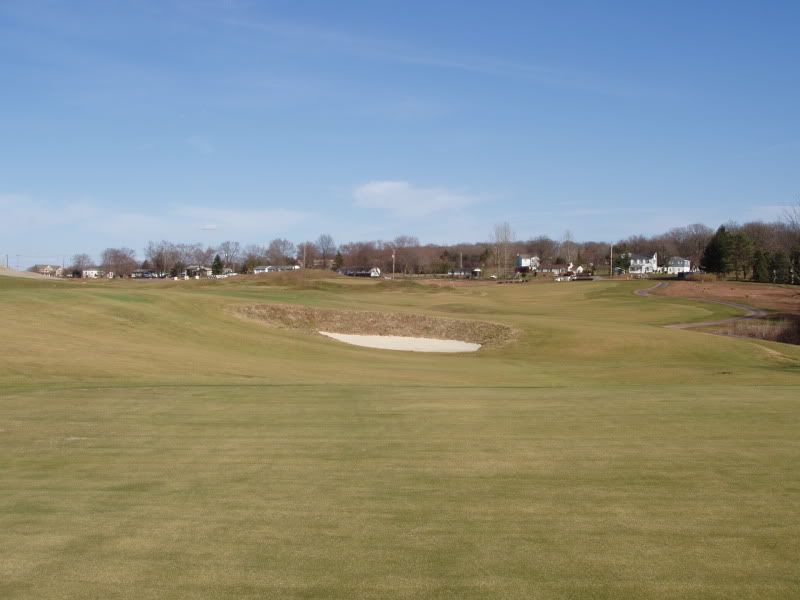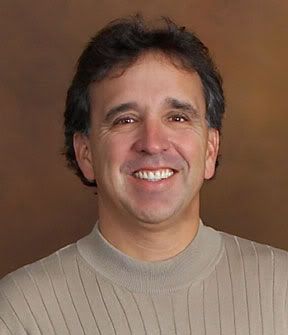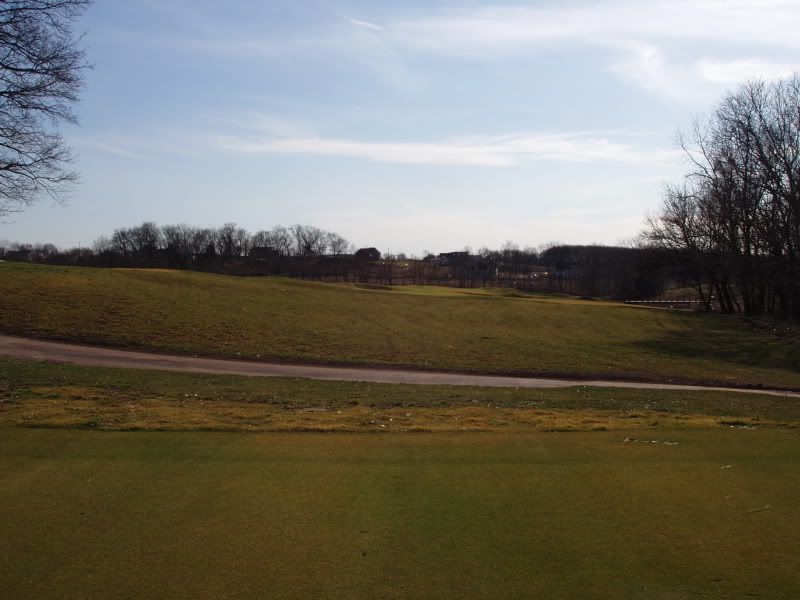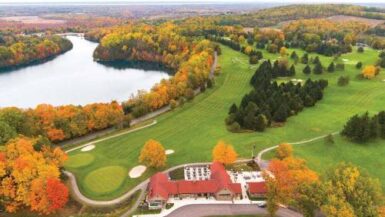
Can you tell golf course architect Kelly Blake Moran is a Texan? He may not wear a ten gallon hat, but boy is he proud of the Lone Star State. Call him Amarillo Slim in a windshirt.
“And I’ll tell you another thing!” he roars disapprovingly. “Those Oklahoma teams that won those national championships a few years ago? I’ll give you one guess where half their roster is from.”
He doesn’t wait for an answer. “Texas, that’s where! If I had my way, those players that crossed the border would lose their citizenship and never be allowed back!” Funny thing about it is most of Texas is laughing and saying, “He’s right, you know.”
Moran is so proud of his Texas heritage, he even wore a jacket, tie and cowboy boots to dinner at fabled Muirfield in Scotland, while on a trip to see the great courses of the U.K.
Happily, Moran’s sense of humor and reverence for great design strategies is spilling over into his work and the results are commanding the attention and respect of the golf world. Half an hour north of Philly, his rough and tumble Lederach Golf Club, (pronounced “Let her rock”), is the most affordable and most interesting daily fee course in the region, possibly even in the entire Commonwealth of Pennsylvania. Much of the course’s success in drawing players on a national, not regional basis is due to importing design concepts from St. Andrews, Royal Dornoch, Muirfield and many other great U.K. Courses.

“Not a day goes by when I don’t try to use something I learned at St. Andrews” he recalls fondly. “That is why I am going through the exercise of analyzing some of the green features at TOC on my website: http://kellyblakemoran.com/TOC%20Blog.html. There is so much to learn from that course that can be applied to my design approach and I am trying to get the most out of it through my experiences there.”
JF: How did you first get into golf?
KBM: The reason I got into golf was my parents belonged to a private club.
JF: Which one?
KBM: Odessa Country Club. That was back in the good old days when company execs got that as a perk. So I would go with my parents out on the course. I was eight when I started playing.
We had a special group of kids that played together, and we had a lot of success playing in high school, where we won state championship for Permian H.S. You know the movie Friday night lights? That’s really Permian! We were there at that time the when it was the most successful H.S. program in the country for a lot of years. We even had a lighted practice field.
JF: How good a player were you?
KBM: I was a 2 back then…not on the greatest course in the world, but we were good golfers. One year we won the championship and then senior year we came in fourth in the state.
Now I played football as well. So as a ninth grader, before I went to Permian, at the end of that season, my coach called me into the office and even though he wanted me to play football at Permian, I said I wanted to play golf. The coach asked me what I was shooting, and so I told him I was shooting 76-77. He said, “Son, that’s not good enough to play golf at Permian. You should play football,” but I knew he just wanted to send a warm body to Permian to play football, (or be a blocking dummy, however you wanna look at it). I knew he was B.S.-ing me because he wanted to look good to the Permian coach, so told him I wanted to play golf for Permian anyway.
JF: What position were you in football?
KBM: I was what they called a “split guard” or a pulling guard.
JF: But you’re thin as a rail? How were you a lineman?
KBM: I was the fastest guy in the school as a kid – I could play some cornerback too – but I got slower as I got older, so they had nowhere to put me. I still remember I weighed 130 lbs in 9th grade and I once had to go against a 200 lb. kid! The coaches rode me all week saying I’d get annihilated that game.
JF: What happened?
KBM: I kicked his ass. They ran the ball behind me all night, we beat ’em 37-0, maybe 38-0. I didn’t even know the kid, but the coach had me hating him. He was just a big marshmallow. They said he was all tough? He wasn’t so tough!
JF: What made you decide to become a golf course architect and what did you do to follow that career path?
KBM: I started at UT architecture school. I made the freshman golf team there, but tired of competitive golf and never went back to play competitively. I went through six rounds of qualifying and I made the team, but I decided to move on. But during college, I really missed golf and wanted to get back – not to play, but to design. I realized someone had to be designing these courses, and I was already in architecture school, so I applied that interest in golf design to architecture and that’s where I got the idea to do it.
So I did some research and found out landscape architecture was a better degree to do that and UT didn’t have one, so I had to transfer to Texas A&M.
JF: And you didn’t get your butt kicked for doing that?
KBM: Oh, I did! I did! I’m almost certain they disallowed some of my credits because I was coming from Texas! It was such bull! I had to take summer school at Odessa College. They made me take English and History that summer and I’m sure it was punishment for not going to A&M in the first place.
JF: is that why your first sports loyalty is still the Longhorns?
KBM: Yeah, it is. (And Jay, I love your new Longhorns golf bag by the way…)
Actually my first loyalty was Texas Tech, that’s where all my family went. I had lots of family that live near Lubbock, and I saw a lot of games in Jones Stadium. I hated Texas back then, and I remember screaming at Earl Campbell. But my senior year I got invited to Austin by a friend, and it blew me away. Austin was the most incredible town I’d ever seen.

JF: So what happened after A&M?
KBM: I had heard of von Hagge in college and saw a golf course he did called Crown Colony in Lufkin, Texas, really nice course. So I contacted von Hagge to do an interview for a class project and Bob was kind enough to allow me to come into the office and interview him, mostly over lunch. (He was eating salad when I came in. I still have the cassette tapes form the interview, but I have nothing to play ’em in.)
So as the school year went on I pursued him for a job and eventually they hired me as a draftsman and told me that there were no openings for designers. They strictly needed draftsmen – turning the sketches into formal routing plans for presentations. Well they got very busy so six months later I had my own project to work on.
JF: Where was that?
KBM: The Cliffs in a place called Possum Kingdom Lake. Then I became a partner and was there for 11 years, from 1984-1995. Then my wife and I decided to move to the northeast, near her family.
JF: What did he teach you about designing good golf holes?
KBM: Well that really came from Scotland. One of the other reasons I moved away to PA was also a desire on my part to not be a corporate entity, but a true designer, someone who interacts more with the construction and creation of what you design. In the corporate world there was separation there. I wanted to be out in the field more, creating what it was I wanted to design.
JF: When did you go to the U.K. to study the great courses and what courses in the U.K. did you visit?
KBM: I went in 2004 and again in 2007. The first time I saw the Old Course, Cruden Bay, Nairn, Royal Dornoch, and Brora. The second time I went, I went to the Old Course, Muirfield, and North Berwick. These trips gave me the confidence to be a little more bold and daring in certain features on and around the greens and to be bolder in the placement and the construction of the bunkers.
For example, the bunkers at Lederach are a little more rustic. They are steep faced and the faces are grass: not manicured, but a little more “rough.” There are different types of grasses too, and they are not meant to be perfect. I wanted them to feel like Scotland.
I also want the ground game. I delight in seeing guys play those shots. I also want players to have lots of options around the greens. I keep the fronts open and allow the entrances to create interest in those shots, lots of different shots around the greens.

JF: What courses did you study here in America?
KBM: The ones that most impress me the most are National Golf Links of America, Yale, (Yale was a very bold property that had impressive greens), and then more recently, Yeamans Hall in South Carolina, and Country Club of Charleston.
JF: Did you play Mike Strantz’s Bulls Bay while you were down there?
KBM: No, but I did play Tobacco Road! I loved it through the greens. The greens were a mix, some bold, some a little more conventional as compared to everything before you got to the greens, but it was a joy to play.
JF: Who are some of your favorite architects and why?
KBM: I appreciate Macdonald because of what he did at National Golf Links. I appreciate Seth Raynor and his ability to manufacture those green sites and how he infused boldness around the greens with deep bunkering and great shaping in the putting surfaces. George Thomas wrote a great book – he has some real gold in “Golf architecture in America” regarding the Golden Age of Architecture and strategy in golf design, and great holes. I haven’t played a lot of his courses, only a few, but the book is very instructive.
JF: Other than your own designs, what are your favorite public courses to play in the U.S.?
KBM: I haven’t played too many when I’ve traveled, but in my area there are a lot, like Berkleigh C.C. in Kutztown, PA. Then for me, I’d say Reading Country Club.
JF: What public courses should my readers play to learn about great golf design and also have a great golf vacation?
KBM: You probably can’t get a better sampling than Bandon Dunes Resort. I don’t know how you to that other than Pinehurst. But you know what? Having grown up on not great architecture, I still had an appreciation for the game. People need to look for the courses in their area and find the special features there. That’s one way for them to improve their eye for architecture. It’s hard to teach that. I find it because it’s my job. Look for things that are unique and have character. Then go to St. Andrews – not just for the golf but for the town.
Your readers should not just try to cherry pick great courses, but also visit great places like New York City (Bethpage), and Chicago and its great public courses, and San Francisco. These places are where you get a flavor for the golf and the life of the region. For example, Sharp Park in San Francisco should be preserved not only for great architecture, but its history and environment. Travelling to play lots of great courses in great towns is more enriching than cherry picking the top 100 courses. Golf should be more about playing the game and meeting people and having enriching life experiences rather than racking up a number of great courses.
JF: Walk us through how you found the routing for Lederach.
KBM: I walked the land over and over. I spent four days in a row out there just walking.
It was a residential community, so I stressed to the owner that I needed to make the first run at the master plan. A land planner could try it, but he’d screw it up. They can’t lay out a workable golf course. I looked for the interesting features in the lower parts of property that I could capture, knowing that I had to have homes with good views of the golf holes. If there were no homes the course would be different. I had to find the areas best suited for the environment…there was no getting around it.
So I was walking the course, and there are lots of little creek areas that drain naturally well, so I incorporated them into the routing.
JF: What elements of courses from across the pond will we find at Lederach?
KBM: What you’ll find is wide openings into greens with broken terrain – terrain that moves, like swales and ridges, the blind bunker, and other bunkers that strategically make a lot of sense, but they aren’t constructed in an artificial way, but they fit into that position.
JF: There is a lot of center-line design as well.
KBM: Yes, there is, and that creates a lot of interest, character, and strategy.
JF: Tell us about “Large Marge,” your blind bunker on the third hole of Lederach.
KBM: I like that name! Good one, Jay! Yeah, Large Marge adds a lot of interest to the second shot on that par-5. It’s blind because you have to think. You have to make a bold play over or around it, or lay up. It’s blind because where it had to be positioned is where the hole goes over a ridge and into a swell. It’s shape required the face to be toward the green.
JF: Why were you brave and bold enough to try that?
KBM: It’s more that it makes the shot interesting. I wanted an interesting shot. Anyone can play a shot with no consequences. I wanted the player to think and then execute. I want people to play risk and reward golf. People remember that bunker after the round. You can also play the course 100 times and you’ll have a different shot on that hole with uncertainty when you get there, and that’s fun golf. That’s the beauty of the blindness, it raises doubt in your mind. So the bunker is in the best position for the slope and it has great strategy.
JF: What’s next for you?
KBM: Mexico. I’ve been doing reno work at a club in Central Mexico called Torreon. I’ve been working on the greens 7-10 days at a time.
It’s been a wild time. I almost got shot at during a soccer game we went to. They have a pro team in the town, and we went to a game and I guess there were some bad guys, some banditos coming through the area in vans, and they didn’t stop at a police road block set up at the game, so the cops opened fire. Well they were fully armed, and they came out of the van and returned fire with machine guns. We’re in the stadium when the machine gun fire breaks out, and though we were never in danger, the players ran off the field and we all ducked under our seats. We thought maybe they were trying to shoot their way in…we had no idea what the intention was.
That went on for five minutes, but eventually the gunfight ceased, they moved on, and we got ourselves together and walked out of the stadium. The minute the gunfire started the players left. It was scary. There were little kids frightened out of their minds. To have that happen was unfortunate.
JF: What is the strangest, zaniest thing you have ever had to deal with while trying to build a golf course?
KBM: Oh, that…
(Laughter)
JF: How about on a site?
KBM: Well again in Mexico at another course with a lot of water, they gathered all the crocodiles on the site in little canoes and roped them, and put them in the canoe one by one and transported them to a preserve a few miles away and – lo! and behold! – somehow all the crocs came back! So while I’m making site visits, I had to cross bridges and all they had installed were narrow pieces of metal to get over a 60 foot water way! So I’m on my hands and knees going across because I’m afraid I’m gonna fall and get eaten by crocs! I’m afraid of heights, and lemme tell you something – once you look down, you’re done!
JF: How can my readers tell the difference between a truly great golf course and a course that’s merely “pretty good?”
KBM: They need to pay careful attention to the green sites and the variety of pin placements and diversity of how to play approaches into the greens. That tells you a lot about whether you played a great course or just a decent course. Pay special attention to the green sites. So many courses are boiler plate, you don’t want that. You don’t want greens that are all the same. The greens and bunkers aren’t just dessert, they should be dinner as well, and evoke a response for you to play a good shot to make a good score. Eye candy isn’t enough.
JF: How much is too much for a public round of golf, and how do you know when you’ve over paid?
KBM: In my own view, normally I don’t feel comfortable paying more than $50-60. There is a lot of good golf out there for less money if you take the time to look for it. Berkleigh is a great example. I pay $30 for a really nice course with interesting greens. They even played an L.P.G.A. event there. I can also pay $75 for a country club for a day, but it better not be pedestrian with mundane greens and uninteresting bunkers. A fancy clubhouse with all those greeters and amenities? I don’t need it and it isn’t what I want.
JF: What is the first duty of a golf course architect?
KBM: To become as familiar with the land of your course as possible.
JF: You can take the pros to one of your public courses where they will play one hole for $100,000 of their own money. What hole do you make them play?
KBM: #18 at Lederach. Its short par-4, drivable, but it has water left, a green with pin positions that are really challenging, some may even say unfair, but challenging, and a center-line bunker. It has a safe route to the right. You can challenge the bunkers and gain a tremendous advantage, but if you are just slightly careless with your tee shot and it moves more left, you can end up in the pond. You have to be precise in order to go at the green. Or you can play conservatively, but have a more difficult approach into a green with significant slope and land forms in it.
JF: You just won the Masters. What do you serve for dinner?
KBM: Argentine Carne Asada BBQ. Not just Texas brisket for that occasion, but Argentinean beef.



